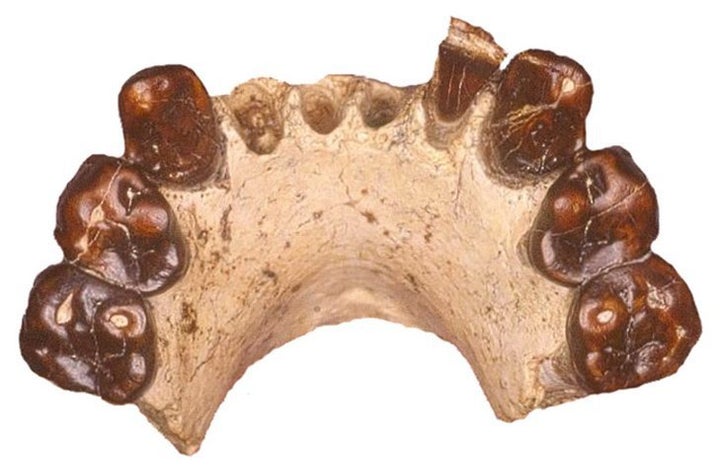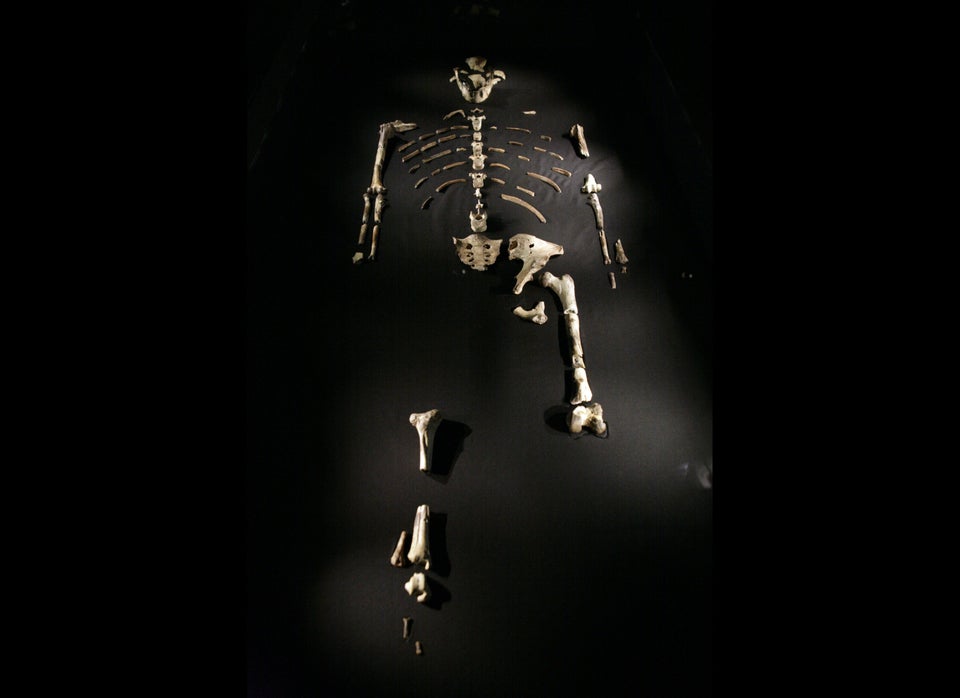
on
There's no accounting for taste—a truism that extends even to the earliest humans. By 3.5 million years ago, some early hominins in the Central African nation of Chad had already developed their own distinct tastes—literally. Three members of the genus Australopithecus—close cousins of the famed Lucy—had a yen for grass and sedges, according to a new study published online today in the Proceedings of the National Academy of Sciences. The shift suggests that hominins adapted their diet to living in more open terrain, as our ancestors did at some point, earlier than thought.
The earliest members of the human family walked upright, but they still looked more like apes than humans—with chimp-size brains and small, hairy bodies. Then, "around 3.5 million years ago, at least in Central Africa, the hominin diet shifted from an ape fruit diet to a grass/sedges diet," says paleontologist Michel Brunet of the Collège de France in Paris, whose team discovered the fossils. This diet rich in so-called C plants (enriched in a particular carbon isotope), such as tropical grasses, was a major shift from the customary diet of apes such as chimpanzees and gorillas, which feed on fruits, seeds, and plants found in woodlands.
Researchers have long wondered when members of the human family shifted from that fruit-rich diet favored by apes to one that relied on plants and animals found in more open grasslands. By studying the ratio of the two nonradioactive isotopes of carbon—C and C—in the enamel of teeth, researchers can detect whether an ancient creature ate a diet rich in woodland or grassland plants.
Three years ago, researchers used this method on the teeth of one of the earliest known hominins, the 4.4-million-year-old Ardipithecus ramidus. They found that Ar. ramidus still favored the kind of Cplants that apes prefer, suggesting that it was still spending a lot of time in woodlands. About 4 million years ago, the teeth of hominins such as Au. anamensis began to show thicker enamel and bigger molars and premolars, suggesting a major shift in diet. But until recently, researchers were unable to test this by studying the carbon isotopes in the teeth of such old fossils because the method of removing the isotopes was too destructive. Now, with new laser ablation methods available in the last 15 years, they are able to sample the carbon isotopes without destroying the teeth.
Brunet gave Julia Lee-Thorp, an archaeologist at the University of Oxford in the United Kingdom and a specialist in isotopic analyses of fossil tooth enamel, permission to test the isotopes in three teeth from three individuals of the species Au. bahrelghazali from the Djurab Desert in Chad. This species is a close relative of the famous partial skeleton of Lucy, whose species Au. afarensis lived at the same time in east Africa. The fossil teeth of the three Au. bahrelghazali individuals ranged in age from 3 million to 3.5 million years old and were enriched in C. That's the signature of a diet rich in grasses and sedges, such as reeds, grasses, and tuberous roots that would have grown around the floodplains and sub-basins of the ancient Lake Chad. "It was surprising because these guys were alive pretty early (in human evolution)," Lee-Thorp says.
The results imply that at least one species of hominin had already become a generalist that had adapted to a broader diet, foraging opportunistically in more open terrain for a wider range of foods than chimpanzees preferred, says anatomist Christopher Dean of the University College London. It would be interesting to know whether other hominins alive 3 million to 3.5 million years ago, including Au. afarensis, had also made this shift to grazing on grass.
Or, as University of Arkansas, Fayetteville, paleoanthropologist Peter Ungar puts it: "Maybe hominin cows weren't that unusual?"
ScienceNOW, the daily online news service of the journal Science
